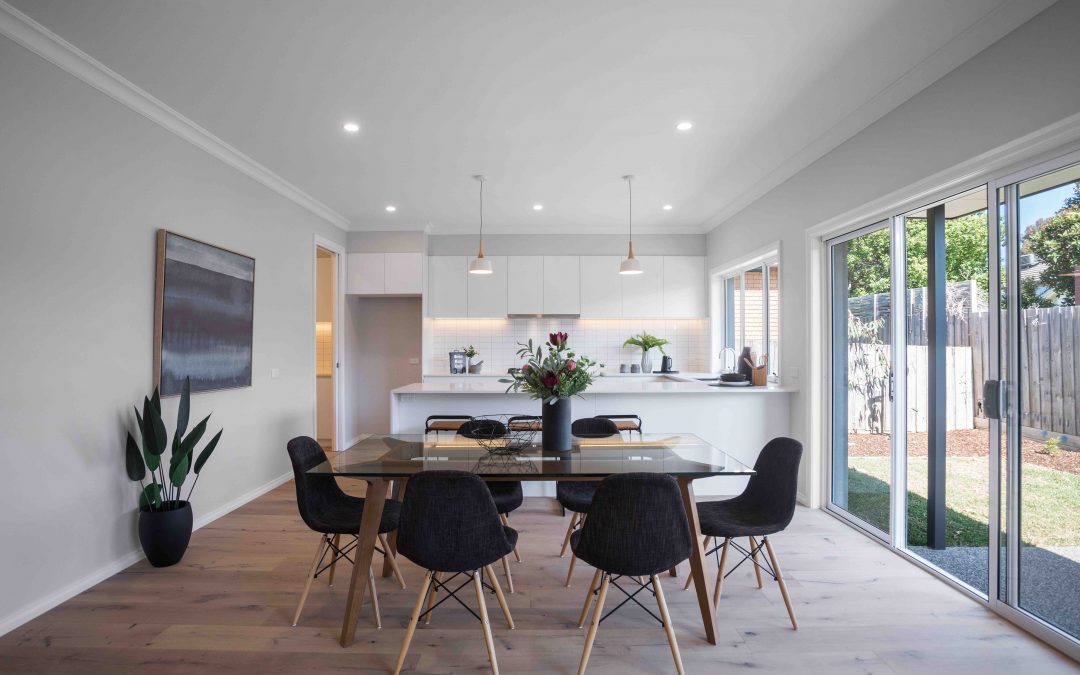Financing a multi-unit development:
A Q&A with Mason Austen from Fulham Finance
When it comes to any new building project, establishing your budget is an incredibly important step. But before you decide how much you’re willing to spend; you should first ascertain how much you can afford to borrow.
 “What are my options for financing a multi-unit development” is one of the most popular questions we hear from potential clients here at RODA and while we can help with guidance, we like to leave the answers to the experts.
“What are my options for financing a multi-unit development” is one of the most popular questions we hear from potential clients here at RODA and while we can help with guidance, we like to leave the answers to the experts.
We recently sat down with Mason Austen, Director and Mortgage Broker at Fulham Finance, to find out more about construction loans and more specifically, how financing a multi-unit development actually works.
Find out what Mason had to say below…
RODA: How does a construction loan work?
Mason Austen (MA): Unlike a home loan, a construction loan typically has 5 progress payment draw downs, as per the building contract, and you would not pay the loan amount upfront like a normal home loan. These progress payments are typically paid by the bank throughout construction and interest is only paid on what amounts have been drawn down. If you are required to contribute any funds towards the build, this is always required at the initial stages before the lender will start their funding.
RODA: What’s involved in the process of applying for finance?
MA: There are the usual documents required by the bank for a normal loan, along with some additional documents for the lender to allow a valuation to be done on the end value of the property. For every loan the bank will require income documents, liability documents and bank statements for them to calculate your serviceability and borrowing capacity.
Along with these standard documents the lender will also be required to see planning permits, building contracts, builders insurance documents and the build specification documents so they can complete a valuation on the property at its end value.
RODA: How much can a client borrow? And how can they work that out?
MA: A client’s borrowing capacity will vary depending on their individual circumstances. Each lender has their own serviceability calculator which will take into account income, expenses, current debt level and living expenses. You will find that all lenders treat things differently, which means Lender A could allow more borrowing than Lender B.
The best way to determine your borrowing potential is to speak with a broker who has access to multiple lending calculators to determine who is the best fit and who can provide the best solution. We often see people use an online calculator from a lender directly, however this does not provide an accurate borrowing capacity.
RODA: Does it help if I own an existing property?
MA: Yes, by owning an existing property you may have the ability to extract current equity to contribute towards the new construction. Depending on the level of equity, you may be able to extract enough to avoid construction finance altogether and pay the builder directly to avoid additional fees and charges.
RODA: Does a loan differ based on whether the project is an investment or a personal residence?
MA: At present, almost every lender will charge a higher interest rate for an investment loan as opposed to an owner-occupied loan. When applying for an investment loan the lender will also be able to take into consideration the rental income which will be earned on the future property when completed.
When applying for a construction loan as a personal residence you will get the cheaper interest rate and be able to exclude any rent expense currently being paid as you will be occupying the new property once completed.
RODA: What documentation will you need to be successful in financing a multi-unit development?
MA: All applications typically require the same documents being:
- Payslips or financial and tax returns if self employed
- Bank statements to support living expenses
- Identification documents
- Existing debt statements
- Proposed plans and permits
- Signed building contract
- A valuation (to be completed by the lender)
RODA: What happens if you need to borrow more money during the build?
MA: This is a very common occurrence however it is extremely hard to borrow additional funds during the build. What the lender will also do is determine the amount that is required to complete the build upfront and require to see evidence of these funds upfront. It occasionally happens where something goes wrong and you require additional funds to complete the build. If these funds are required before a certificate of occupancy occurs, it can cause issues.
Most lenders do not wish to increase the borrowing whilst construction is taking place. If you require additional funds to complete landscaping, which is completed after certificate of occupancy, this can generally be done with a simple top up of funds. There are very few lenders that will increase funding during construction, and it can be a very costly process.
___
If you’re interested in learning more about financing a multi-unit development project in Melbourne, you can get in touch with Mason via Fulham Finance. If you’re ready to get started on the design and / or construction of your project, get in touch with RODA today!






